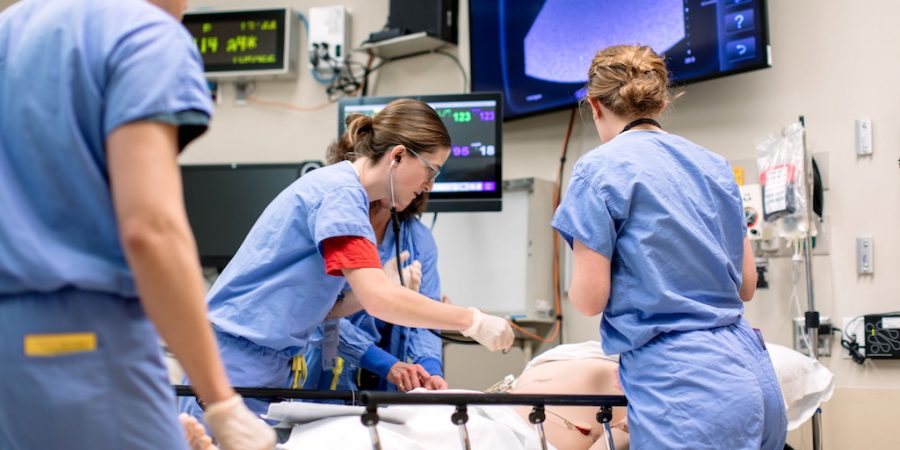The Hidden Costs of Emergency Room Care
Photo Credit: The Mayo Clinic
During medical emergencies, there’s often no time to consider the financial implications of the care received.
April 16, 2019
Rushing into a hospital with a snapped limb or bleeding gash, money is often an afterthought to getting the immediate care needed. However, surprise bills can slam patients after the fact with devastating financial losses.
The costs can seem surreal. Health policy journalist Sarah Cliff gave the example that one family was charged $629 for a visit that involved a single band-aid. Charges for goods that could be purchased at a local drug store are also inflated, with some bills including a charge of $60 for ibuprofen, $238 for eye drops, or $400 dollars for a pregnancy test.
Boise High senior Claire Cruz shared that her “injury occurred at Jump Time ( Boise location) which is a quick 6-minute drive from St. Lukes, but the cost of the ambulance ride was about 600 dollars”. At the time, she “wasn’t able to walk or sit upright” and “didn’t know how severe the injury would be”. Thus, the cost of taking that ambulance was essentially unavoidable.
One might wonder why emergency care is so expensive. According to what medical executives told Cliff, what we pay for when we walk through the doors of the emergency room is the facility fee. This is the fee for keeping the facility stocked with the materials and staff needed to deal with any emergency situation that may come its way. However, this fee can vary substantially from hospital to hospital, and like most other costs in our healthcare system, it isn’t transparent.
There is also the issue that some hospitals aren’t in network for a particular individual, that is, they don’t accept their insurance plan. Even for hospitals that are in network, some doctors may not be in network, resulting in charges not covered by insurance. Trying to navigate this labyrinth of in network and out of network doctors is extraordinarily difficult in times of extreme stress and often pain; in some cases, it may even be impossible if the patient is unconscious and has no say in who treats them. However, the consequences of not being treated by an in network doctor can precipitate debilitating costs.
Our emergency care system is also complicated by the fact that, unlike other medical facilities, hospitals with an emergency department will not turn away the uninsured. This can mean that for the uninsured, the emergency room is their only option for medical care. One consequence of this system is that the uninsured typically only get treatment when an issue has escalated to a dangerous level. Receiving preventative care to maintain good health, by contrast, is not only more ethical, but it’s also far more cost effective. The cost of these emergency visits – preventable heart attacks, late stage instances of cancer, chronic diseases – is absorbed by our healthcare system through hospital prices and insurance premiums.
The lack of availability of preventative care can endanger individuals and burden our medical care system. As 2020 candidates propose ways to revolutionize our healthcare system, we need to look at how emergency care fits into the equation.


